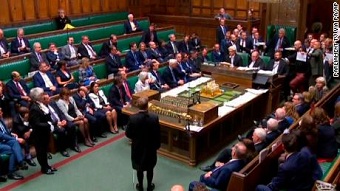Measures to improve the quality of fire risk assessments and the competence of those who undertake them, and to encourage better cooperation among those responsible for fire safety, are to be included in new draft legislation.
The measures – contained in the government’s response to the Fire Safety Consultation published recently – are to be included in the Building Safety Bill as it starts its progress in parliament, and will seek to amend and expand on existing provisions of the Regulatory Reform (Fire Safety) Order 2005.
Provisions are included to require all fire risk assessments to be recorded for each building. Currently, article 9(7) of the Fire Safety Order only requires the “significant findings” of the fire risk assessment to be recorded where the responsible person employs five or more people, and in other specific circumstances.
The Building Safety Bill will also require those undertaking fire risk assessments to be ‘competent’, as defined by article 18 of the Fire Safety Order. This states that a person is to be regarded as competent where they have sufficient training and experience or knowledge and other qualities to enable them properly to assist in undertaking the preventive and protective measures.
Other proposed amendments to the Fire Safety Order are:
• A requirement to hand over vital fire safety information over the lifespan of a building. This builds on the existing obligation under Regulation 38 of the Building Regulations 2010 for fire safety information to be handed over to the responsible person when building work is completed.
• A requirement for all Responsible Persons to record their name, extent of their responsibility and contact information, and require them to take reasonable steps to identify themselves to other responsible persons (and where applicable, Accountable Persons under the Building Safety Bill). This, says the Home Office, seeks to encourage responsible persons to co-operate and coordinate with one another in shared premises, and increase their awareness of their respective responsibilities, as well as to assist enforcing authorities to identify non-compliance in such situations
• Extending unlimited fines to anyone impersonating or obstructing a fire inspector, failing to comply with the requirements of an inspector, or failing to comply with requirements about the installation of luminous tube signs
• Improving the engagement between building control bodies and fire authorities in reviewing plans for building work
• Requiring all new blocks of flats above 11 metres tall to install premises information boxes
• Overhauling all guidance under the Fire Safety Order, creating new guides where needed
The proposals will form part of the new Building Safety Bill to be introduced to Parliament shortly. The Building Safety Bill will create the first national Building Safety Regulator and overhaul the way buildings in scope of the new regime are designed, built and managed when occupied. The draft Building Safety Bill, published last summer, has undergone a process of pre-legislative scrutiny, to which the government will respond “in due course”.
In addition, the Fire Safety Bill – which is in its final stages before royal assent – provides that a failure to follow risk-based guidance under the Fire Safety Order will be evidence of a contravention of the legislation, while following the guidance would be evidence of compliance.








